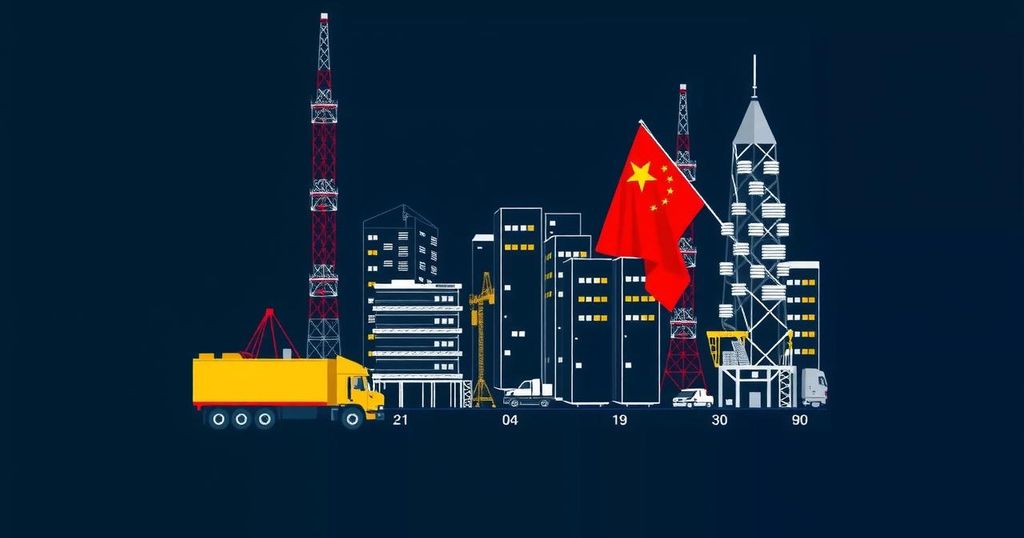India’s Trade Strategy: Balancing Relations with China Amidst Economic Pressures
The Indian government is reconsidering its trade approach with China, amid increasing calls from domestic businesses for better access to Chinese goods and specialists. The trade balance favors China heavily, prompting India to maintain protective measures while exploring selective investment partnerships. Recent developments indicate a cautious but strategic opening towards Chinese involvement in the Indian market, with ongoing efforts to address trade imbalances and safeguard local industries.
The Indian government is contemplating its options regarding trade relations with China as domestic businesses exert increasing pressure for renewed engagement. The gradual thaw in India-China trade relations, which had been strained since the 2020 border skirmishes, is now influenced by India’s aspirations to enhance its manufacturing capacity and the business community’s demand for Chinese goods and specialized personnel. This shift is beneficial for China as well, particularly as it grapples with a slowing economy and rising protectionism from Western markets, leading to a greater reliance on the Indian market for trade. Despite these developments, the relationship remains significantly altered from the pre-2020 period. India continues to maintain stringent non-tariff barriers to combat the influx of Chinese products, indicating that this protective stance may not change in the near future. India’s trade with China has become increasingly unbalanced, with Chinese imports exceeding $100 billion in FY24 while Indian exports languished at approximately $16 billion. External Affairs Minister S. Jaishankar highlighted the disparities in market access, noting that Chinese products enjoy benefits not afforded to Indian goods entering China. A working paper from the Economic Advisory Council to the Prime Minister underscored that Indian exporters encounter numerous non-tariff barriers in China, curbing access for key sectors such as agriculture and pharmaceuticals. Indian officials recognize the complexities involved in reducing dependence on China in light of the ongoing housing crisis in China and the Western trend to diversify supply chains, leading them to carefully weigh options between investment and imports from China. One official remarked on the possibility of initiating joint ventures featuring minority shareholdings for Chinese firms in India, suggesting a cautiously optimistic approach towards foreign investment. India’s strategic openness to Chinese investments is illustrated by recent developments, including Chinese state-owned SAIC Motors divesting its stake in MG Motors to an Indian consortium. Moreover, Chinese retailer Shein is expected to re-enter the Indian market through a licensing agreement with Reliance Retail. However, any significant regulatory shifts concerning Chinese imports or historic bans, such as the one against TikTok, appear unlikely given geopolitical considerations and domestic lobbying for protection in sensitive sectors. India’s larger strategy appears focused on facilitating Chinese investment while curbing imports that could threaten local industries. The government has enacted several protective measures, such as ramping up anti-dumping duties against a range of Chinese products, in response to the assertion that China employs predatory pricing strategies detrimental to Indian market competitors. In the Indian Ocean context, attempts to mitigate Chinese influence also manifest in potential trade agreements, such as the proposed free trade agreement with the Maldives. Although this FTA may lack substantial economic impetus due to the Maldives’ relatively small market size, its geopolitical implications are viewed as significant by Indian officials. In summary, while India is tentatively exploring opportunities for engagement with China through investment initiatives, it remains steadfast in its protective measures against Chinese imports as it navigates the complex geopolitical landscape.
The changing dynamics of India-China trade relations stem from a variety of factors, including India’s aspirations for manufacturing growth and an urgent call from its business sector for greater access to Chinese goods and services. Since the border clashes in 2020, both nations have seen the need for a reevaluation of their economic ties, especially in light of China’s need for market access amidst its economic challenges and recent trends in Western nations toward protectionism. The unique challenges of restoring trade while addressing national security concerns complicate any reciprocal engagement.
In conclusion, while the Indian government is under pressure to revitalize trade relations with China, it is cautious and strategic in its approach. Officials suggest that future engagements will prioritize investment opportunities from China while robustly safeguarding domestic industries against potential risks posed by imports. As India assesses its trade policies against the backdrop of a shifting geopolitical landscape, its response to Chinese investments and goods is likely to continue evolving.
Original Source: indianexpress.com








Post Comment